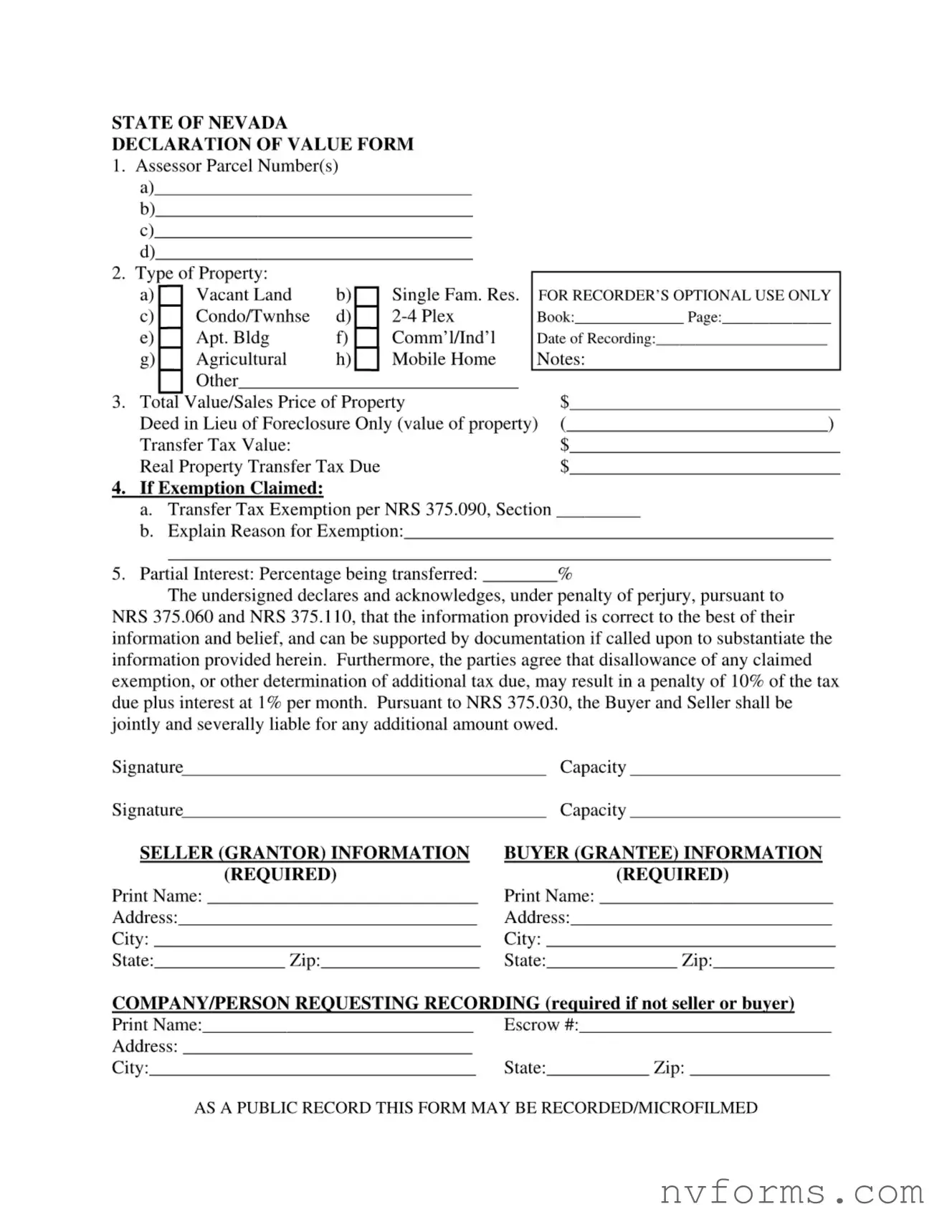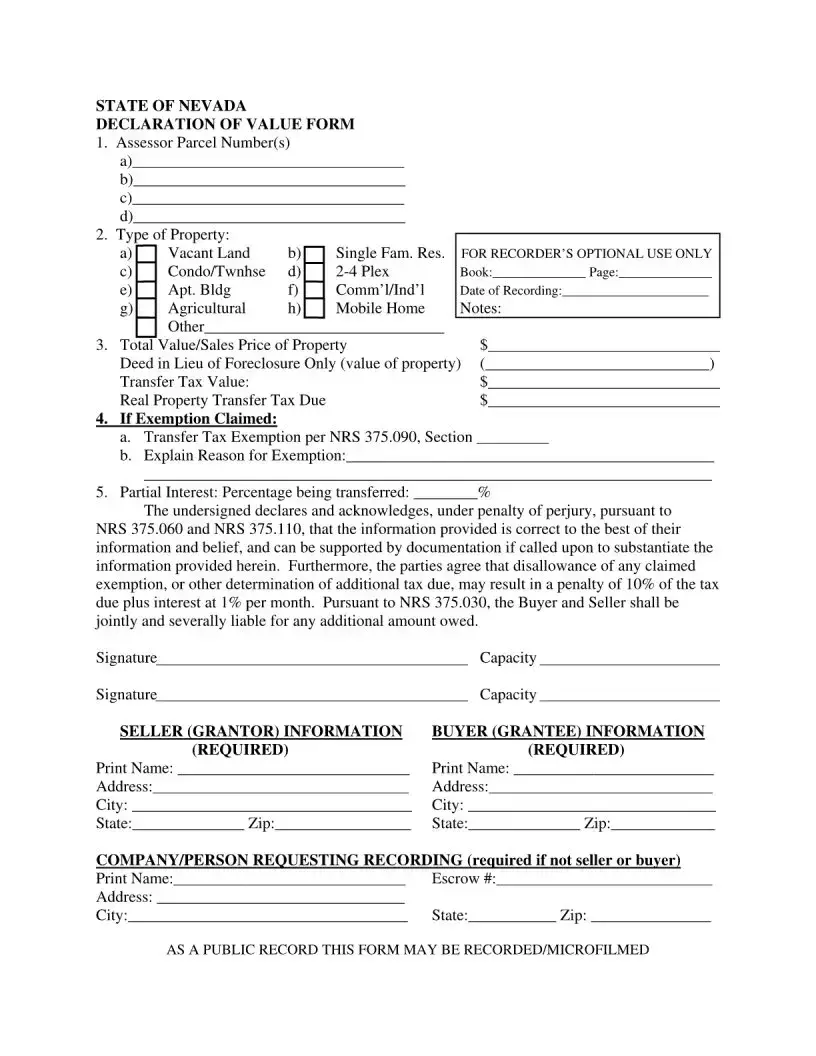When navigating the intricacies of property transactions in Nevada, individuals find themselves faced with a variety of forms and documents necessary to legally seal the deal. Among these, the Nevada Declaration of Value form plays a pivotal role, designed to assist in the assessment of the property’s value for tax purposes. This crucial document, while seeming straightforward at first glance, involves details that require careful consideration. It demands accurate information regarding the sale or transfer of property, including the total purchase price and any related expenses that might affect the valuation. Additionally, it includes declarations regarding exemptions one might qualify for, which can significantly impact the amount of transfer tax owed. Understanding the nuances of this form not only helps in ensuring compliance with state laws but also aids in the smooth progression of property transactions, making it integral for both buyers and sellers to grasp its importance fully.

